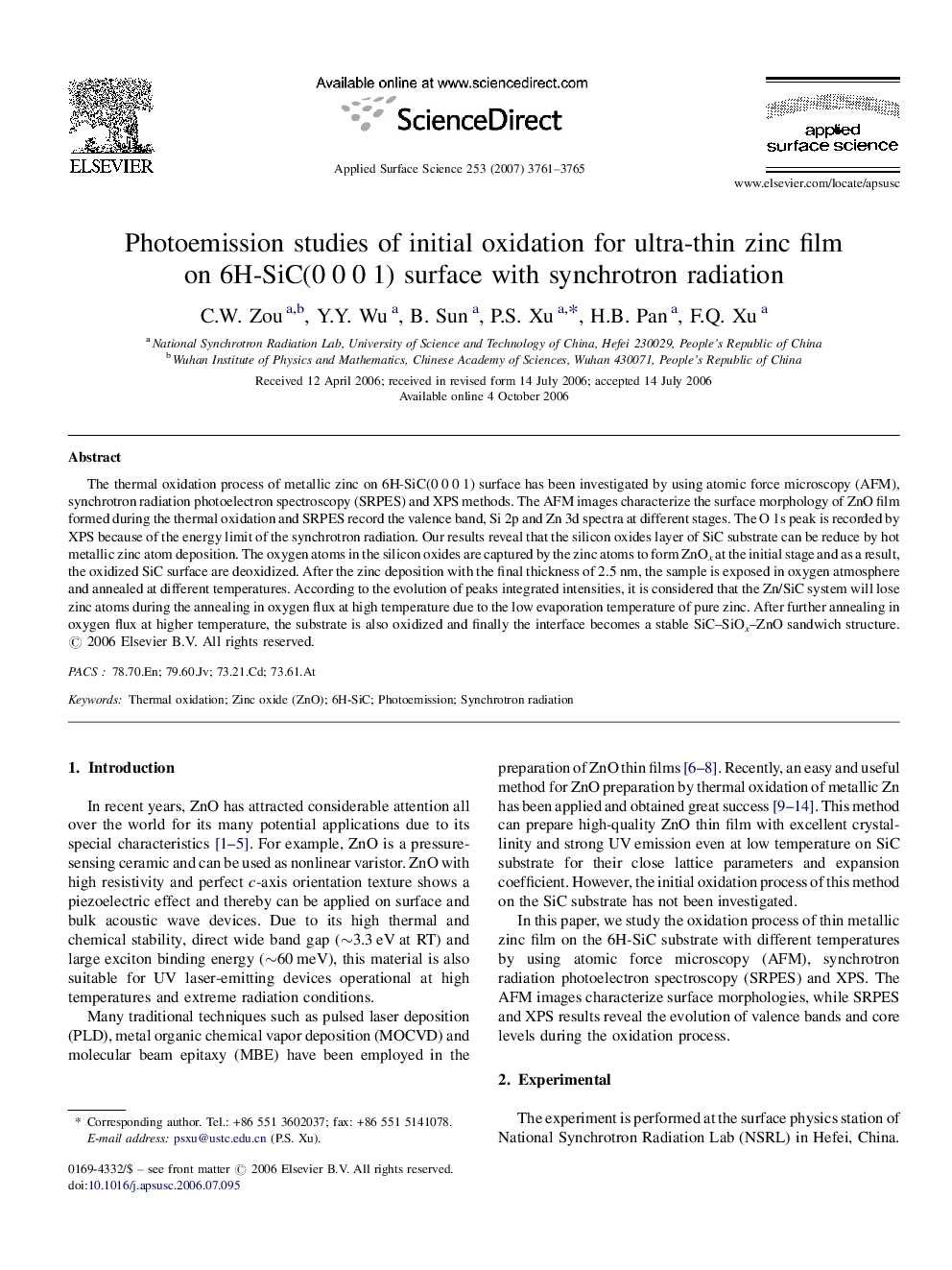| Article ID | Journal | Published Year | Pages | File Type |
|---|---|---|---|---|
| 5369836 | Applied Surface Science | 2007 | 5 Pages |
The thermal oxidation process of metallic zinc on 6H-SiC(0Â 0Â 0Â 1) surface has been investigated by using atomic force microscopy (AFM), synchrotron radiation photoelectron spectroscopy (SRPES) and XPS methods. The AFM images characterize the surface morphology of ZnO film formed during the thermal oxidation and SRPES record the valence band, Si 2p and Zn 3d spectra at different stages. The O 1s peak is recorded by XPS because of the energy limit of the synchrotron radiation. Our results reveal that the silicon oxides layer of SiC substrate can be reduce by hot metallic zinc atom deposition. The oxygen atoms in the silicon oxides are captured by the zinc atoms to form ZnOx at the initial stage and as a result, the oxidized SiC surface are deoxidized. After the zinc deposition with the final thickness of 2.5Â nm, the sample is exposed in oxygen atmosphere and annealed at different temperatures. According to the evolution of peaks integrated intensities, it is considered that the Zn/SiC system will lose zinc atoms during the annealing in oxygen flux at high temperature due to the low evaporation temperature of pure zinc. After further annealing in oxygen flux at higher temperature, the substrate is also oxidized and finally the interface becomes a stable SiC-SiOx-ZnO sandwich structure.
